Goby slayer
noun
Not to be confused with insanity (or anyone with murderous intentions), someone who enjoys targeting gobies.
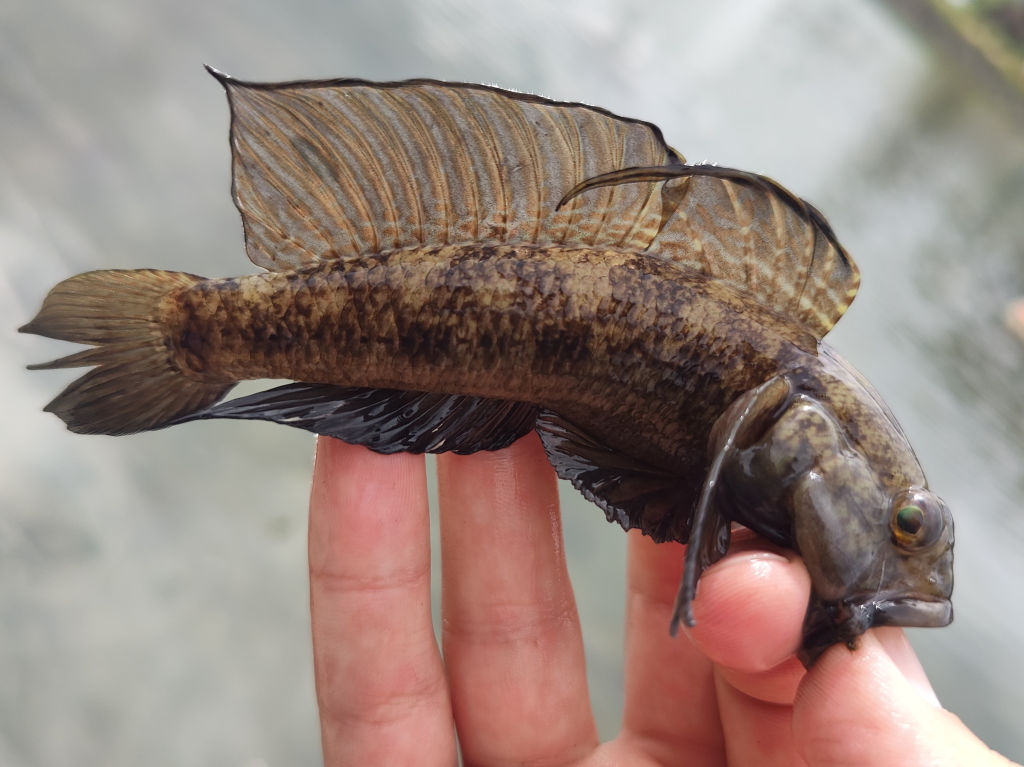
Fashionable fish they are not, the majority of them are tiny and go unnoticed… Gobies aren’t top of most angler’s wish-lists; to the species hunter though, they are a goldmine. If, like me, you enjoy geeking out over the finer identification details, the myriad of goby species will push your buttons. This is my guide to the 8 British gobies that I have caught

First, a quick definition of a goby and what makes it different to the blennies – fish they are often confused with. Gobies (scientific name Gobiidae) are easily identified by their two separate dorsal fins, blennies have one. Most goby species also have a fused pelvic fin that forms a ‘sucker’ to help them cling to surfaces, although it is not super effective. They are scaled and have large mouths with tiny separate teeth for gripping prey; blennies have tightly packed comb teeth and most don’t have clear scales. Once you know these differences they are easy to tell apart.
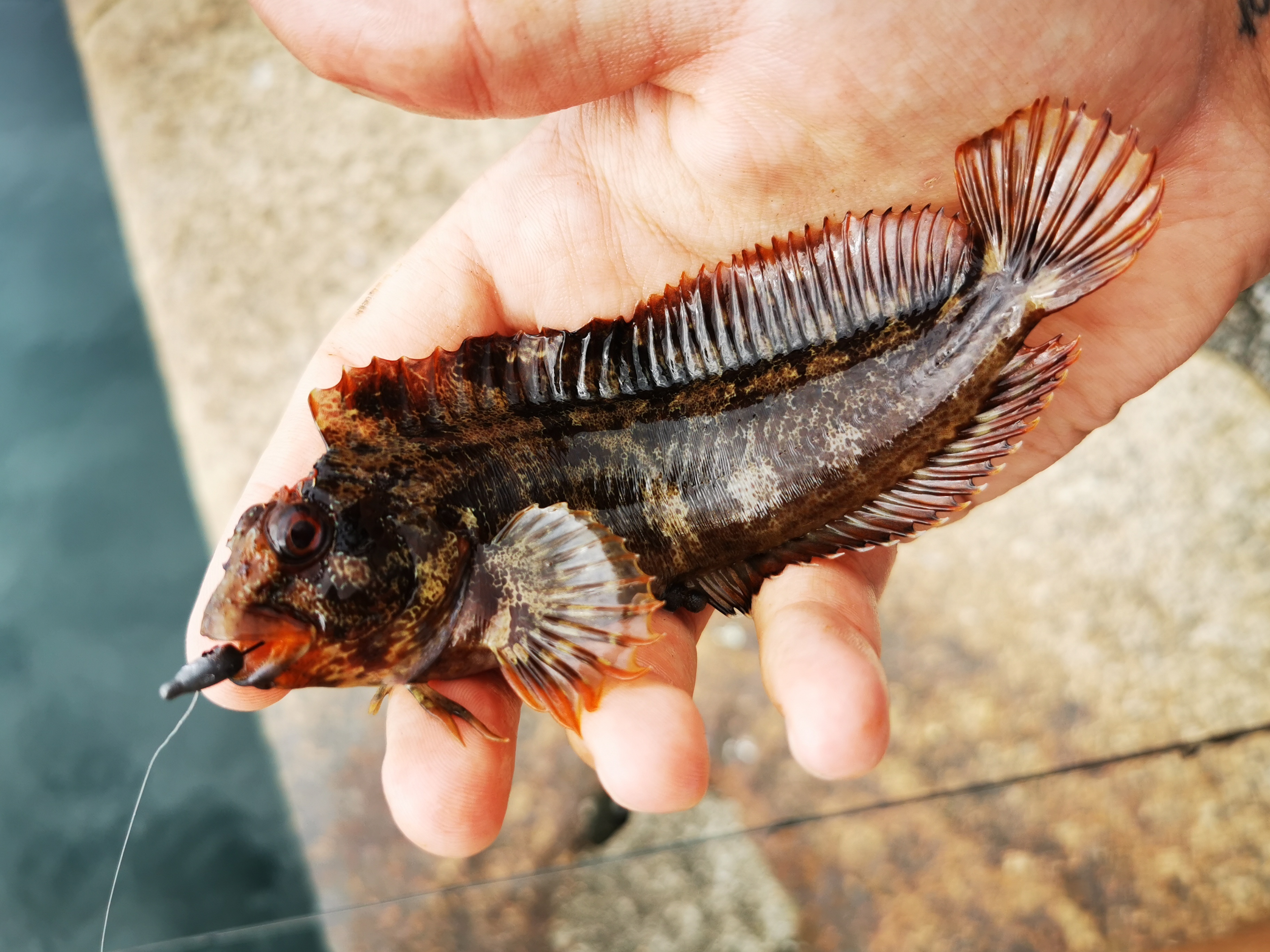
Giant goby
In the UK this fish is a protected species under the Wildlife act, this means they cannot be removed or disturbed from their habitat.
Growing to around 30cm and weighing over half a pound, the giant may be small by normal fish standards but it is huge for a goby. These grand fish share the same ground as other gobies, blennies and wrasse, so it is very possible they can be caught without intending to. So, if you do, it’s imperative you take good care when they are caught and return them to where they were from as soon as you can. Education is key to ensure we know what we are catching and that’s why this species is included here.
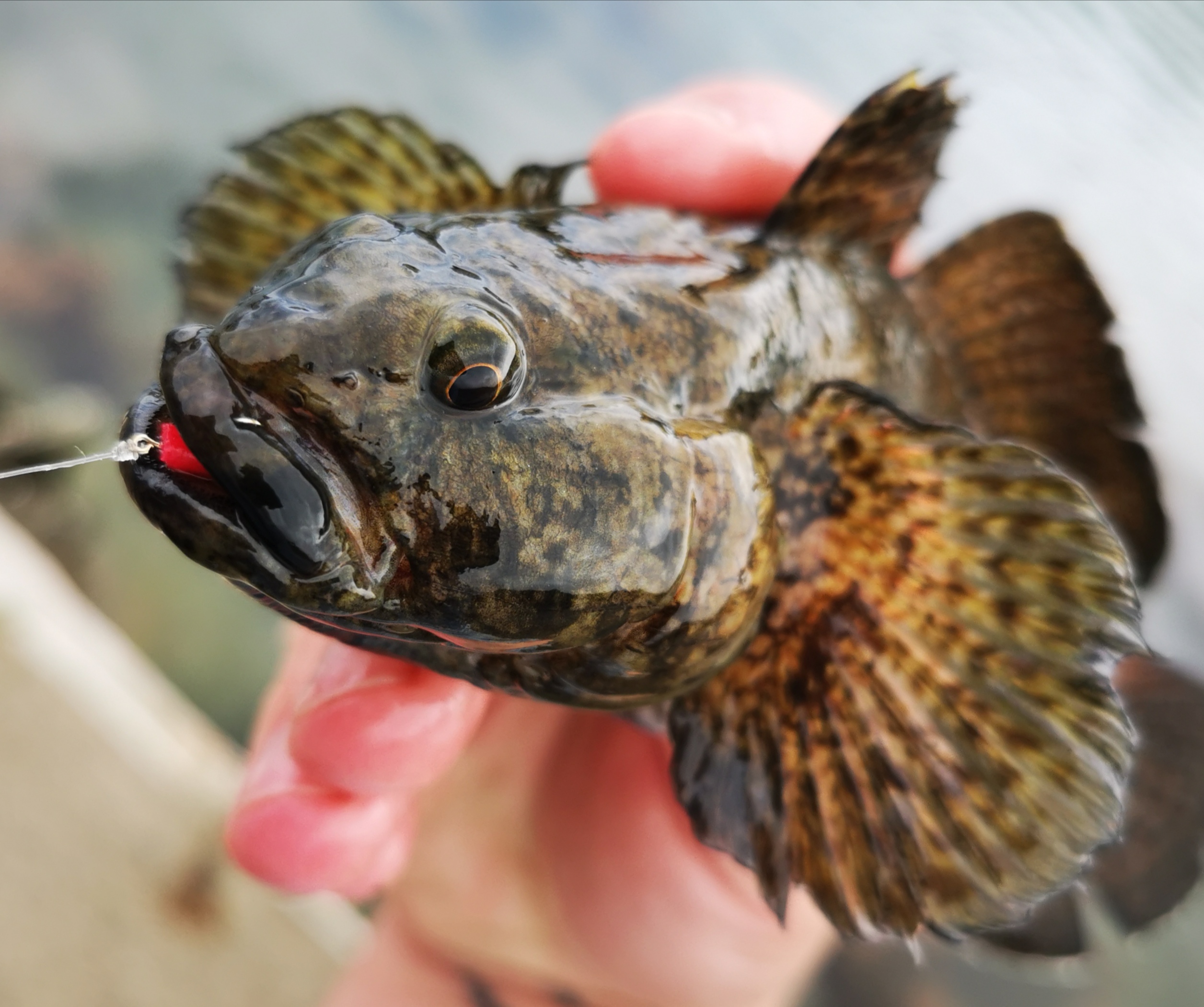
Location: In the UK giants are at the northern edge of their range. This means you are only likely to cross paths with them around the south-west coast, but as our waters warm this southern specialist appears to be spreading.
Identification: Is fairly straightforward, giants have relatively small eyes, with small scales. They can be jet black to light brown but they usually have a mottled, salt and pepper like colouration. Males have a bright blue border to their rear dorsal and tail fin during spawning. If you catch a goby that is over 18cm it is most likely a giant.
Black goby
This goby is a common catch to any LRF enthusiast who fishes harbours, particularly those with a silty or muddy bottom. They grow to a decent size, a maximum of 18cm, making them the second largest goby you will find in UK waters. They do not mind the cold and will often bite when nothing else will.
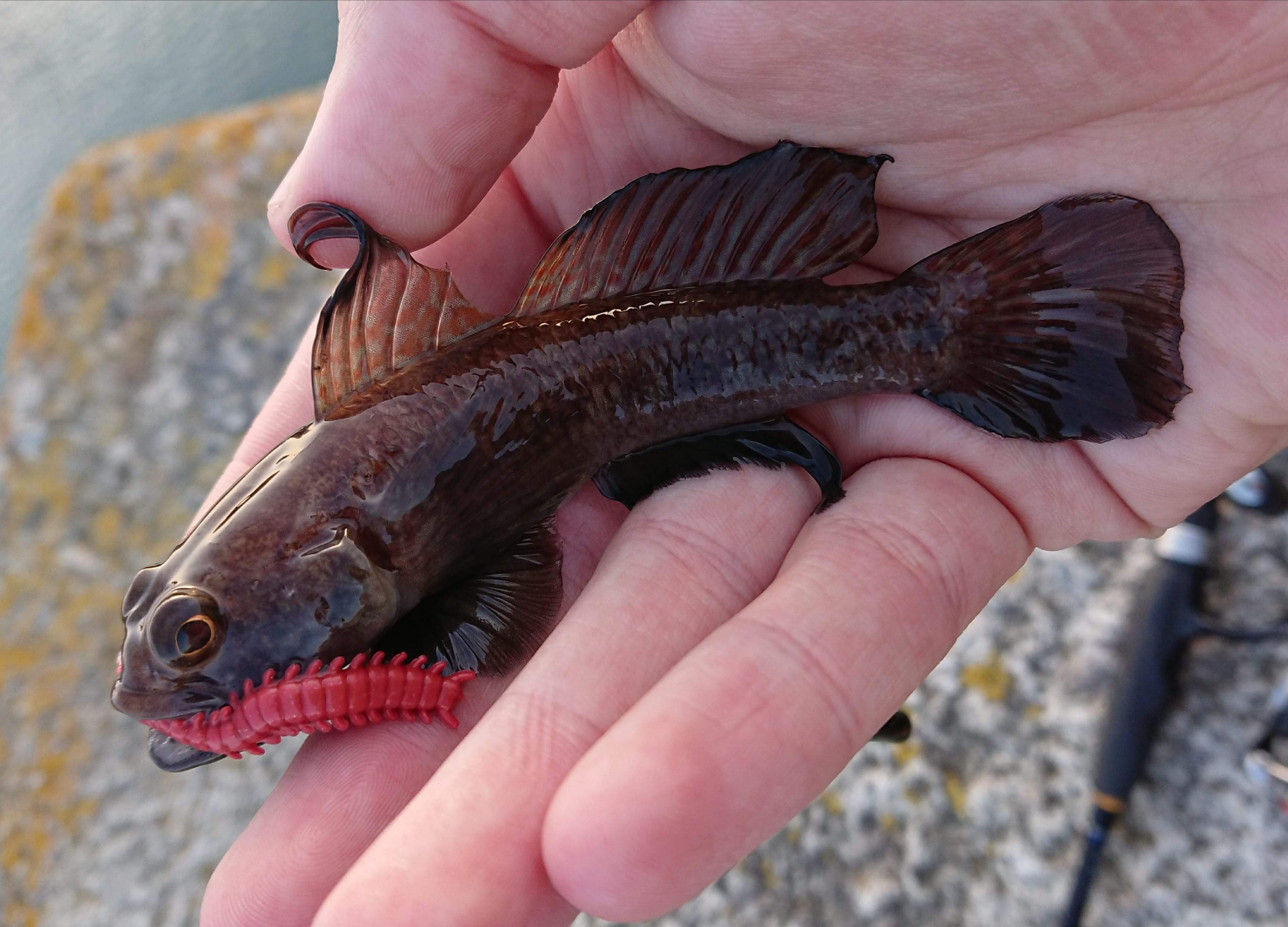
Location: They are found around the entire coast of the UK. Fish open areas hard on the bottom, sand and silt are your friend. Harbours and estuaries with relatively little current can be absolutely full of black gobies, to the point where nothing else can get a look in!

Tactics: Most effective are the usual scented worm lures, rigged on jigheads, dropshot or othe small hooked set-ups. When they are in the mood though they will take almost anything, chasing down paddletails and small metals. Unlike the also very common rock goby, you will find black gobies on cleaner ground in deeper water, preferably with some structure to shoot under when predators are near.
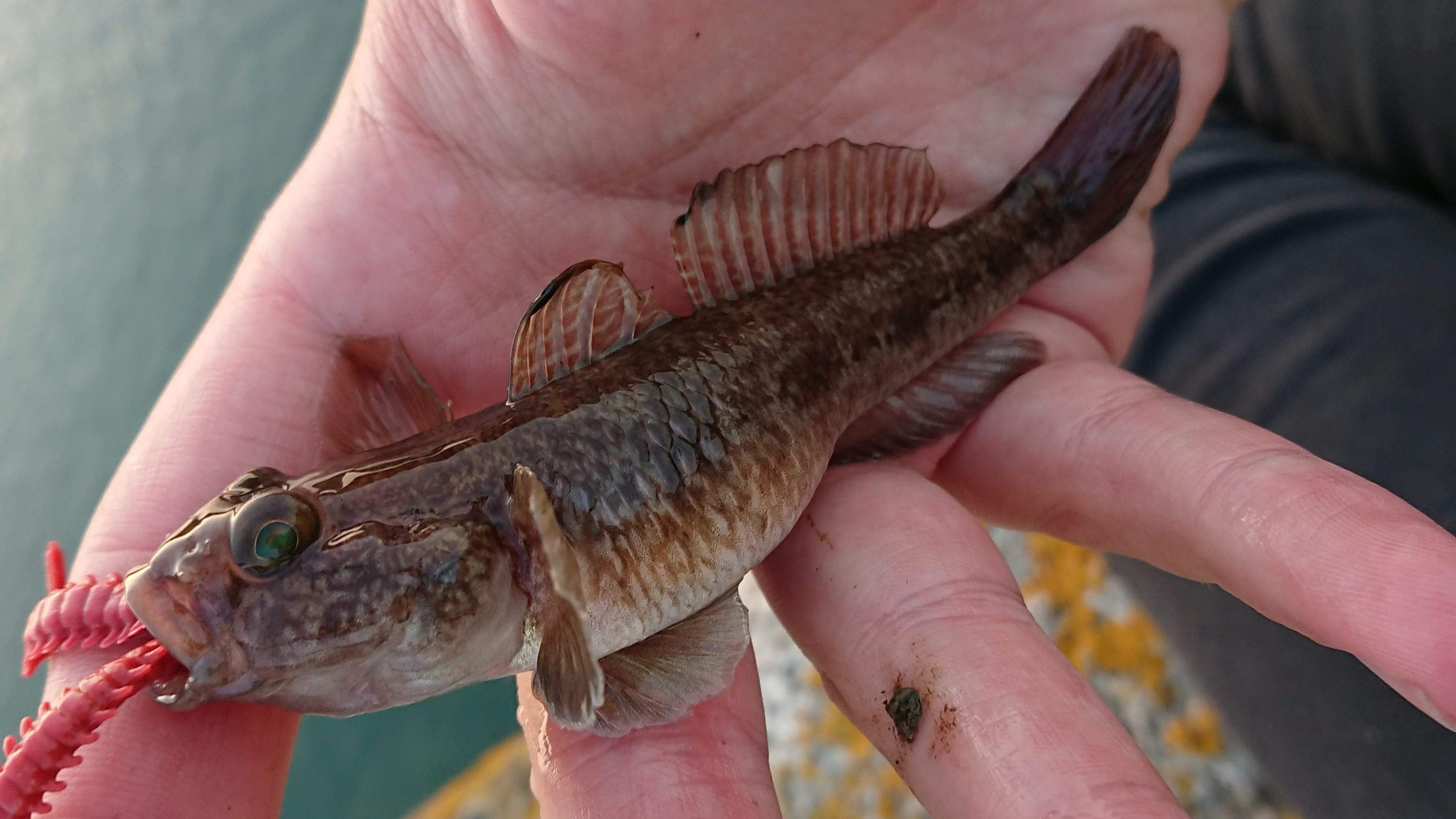
Identification: Again this is easy… Black gobies are not always black, but they do have very dark mouths and fins, especially their fused pelvic fins on the underneath of the body. They have big eyes and relatively large scales for a goby. Females are mottled and have a slightly elongated dorsal fin, in males the fin can be sail-like, making them look very distinct. In fact, the sexual-dimorphism between the male and females can make them seem like separate species. Look for the dark fins and blotches alongside the flanks to ID the females.
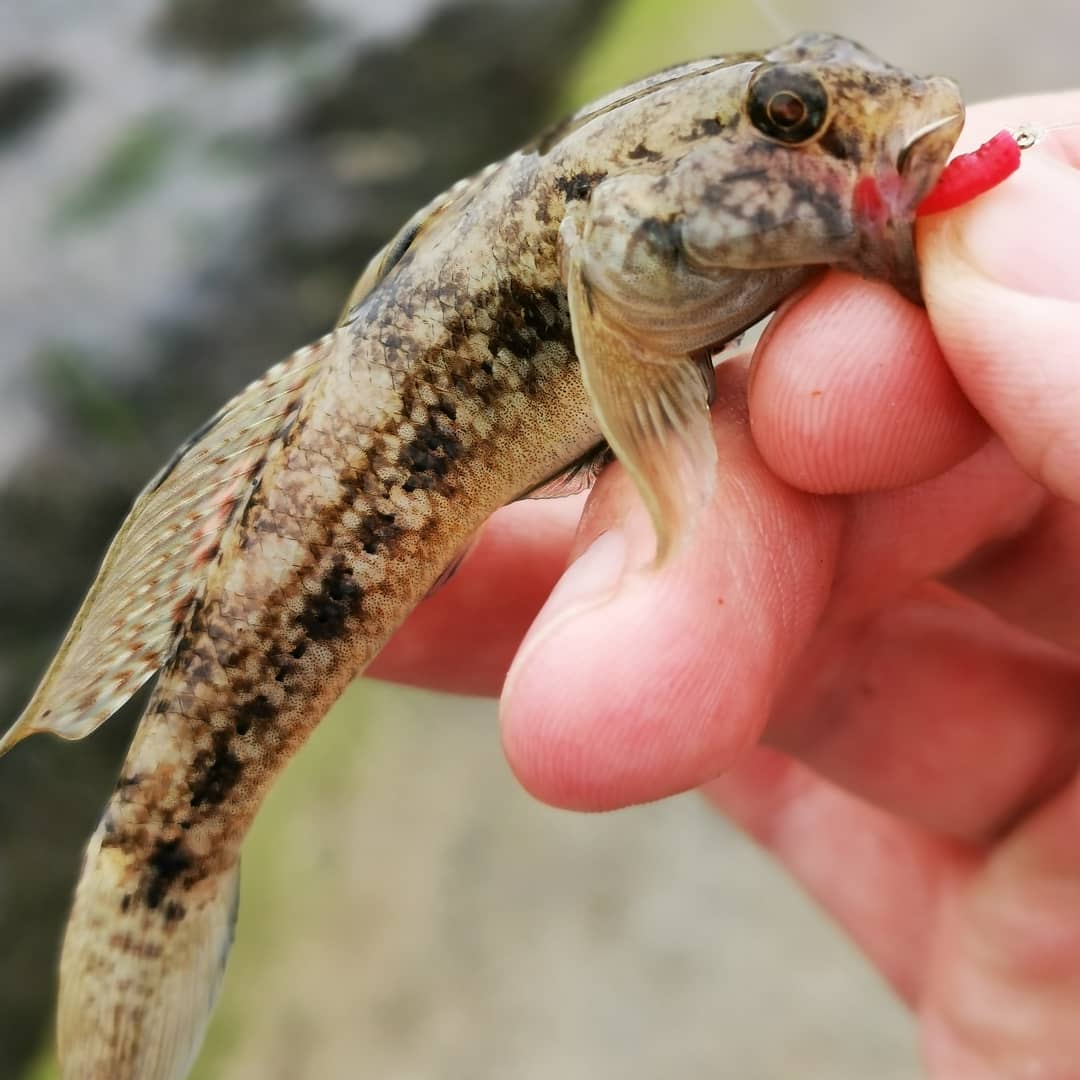
Rock goby
For regular LRF’ers this fish is instantly recognisable, its common and loves both harbours and remote rock marks. A quick biting and aggressive little species, it sometimes can be a little underappreciated.

Tactics: Fish as you would for black gobies but direct your attention to structure. That structure could be a harbour wall, a boulder in a rock pool or seaweed. Sometimes you need to scale down as they have a slightly smaller mouth to the black variety.

Location: Just like the black goby, this fish can be caught around the entire UK coast and normally in the same areas, they just prefer the walls and rocks instead of the silt and sand.
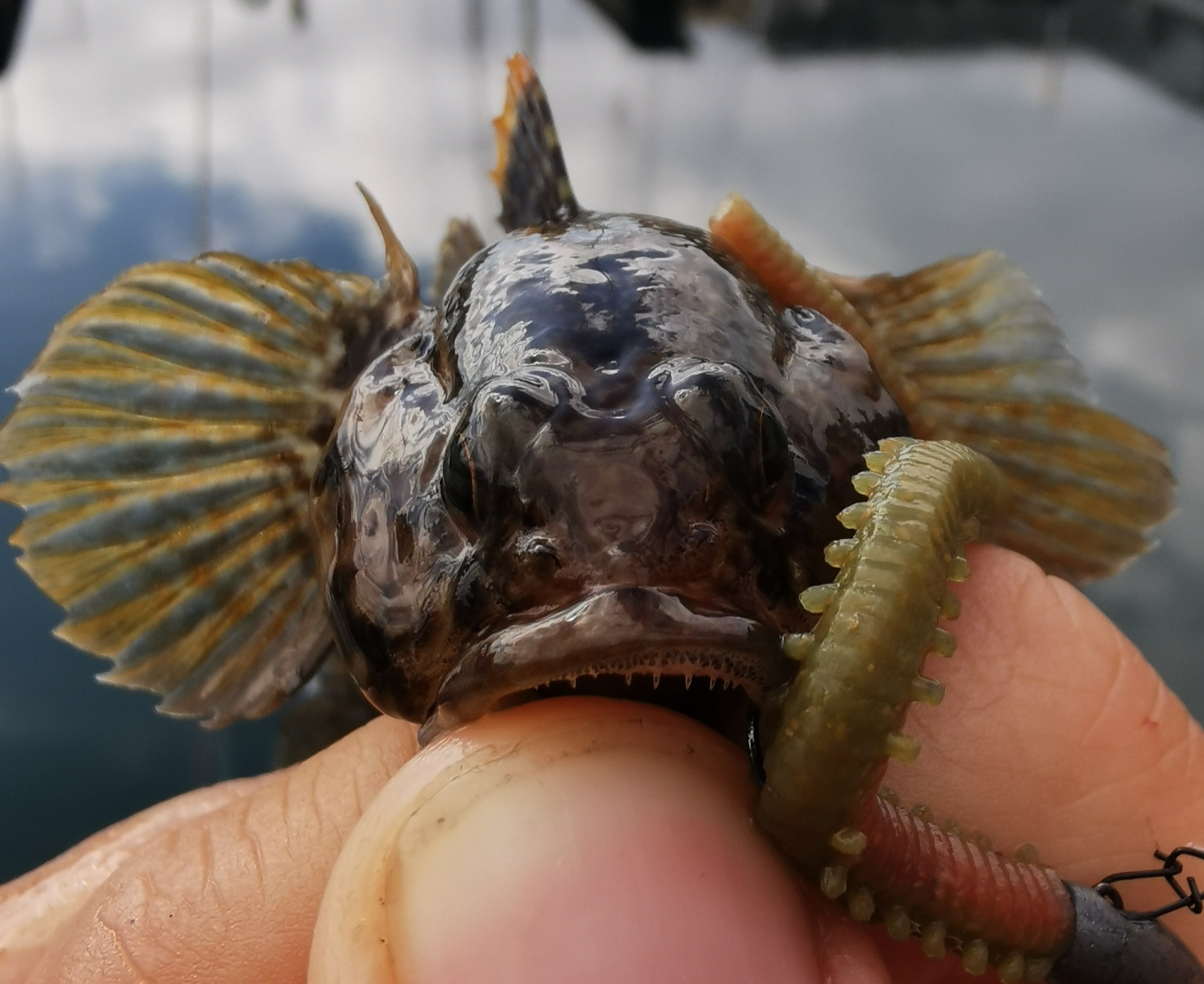
Identification: Look for the orange tipped dorsal and pinky blotches on the cheeks. The scales are smaller but the eyes are large. There is a theme here that carries on with rock gobies, the males turn really dark, almost jet black when spawning. Thankfully they retain their orange dorsal marking, making them easy to distinguish from a black goby.
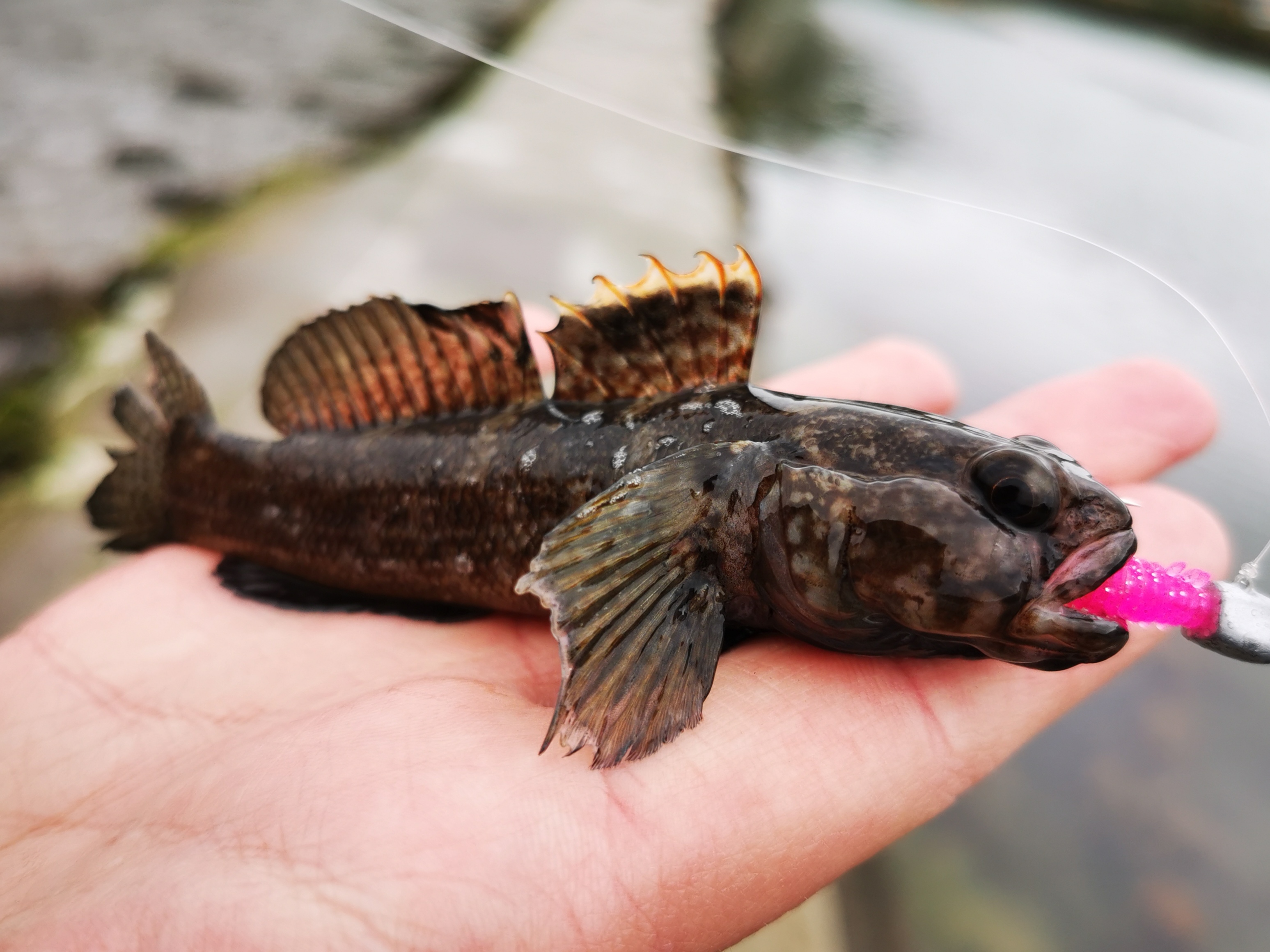
Leopard Spotted Goby
As looks go, this goby is the winner. What helps is this fish isn’t a regular catch for most anglers, making them very desirable in species hunting circles. If you get a chance to sight fish for them, there’s no mistaking what they are, it certainly raises the pulse far more than a tiny fish should! Although they look quite tropical they are active in low temperatures and prefer deeper water.
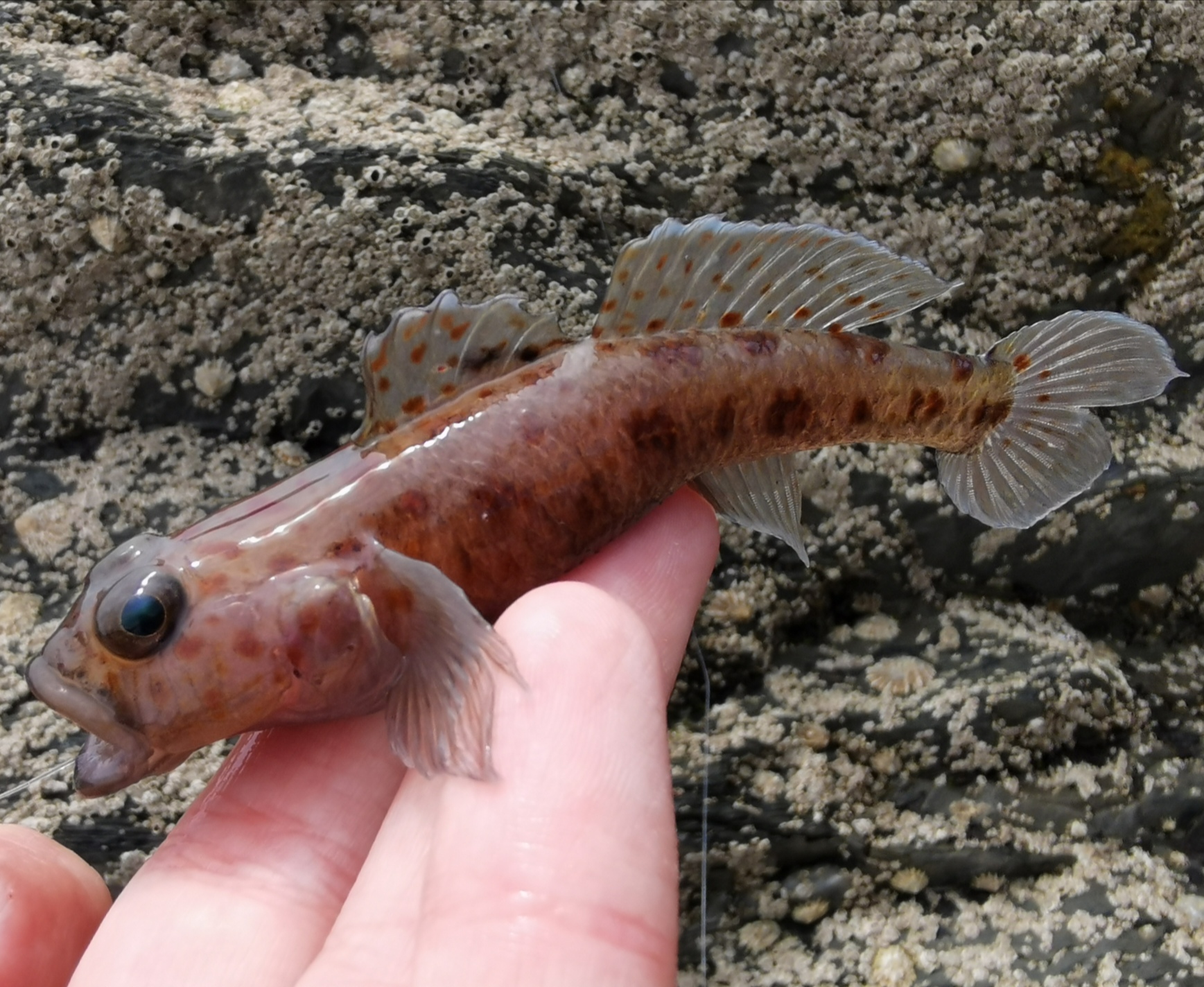
Location: Another widespread species, they can be very localised though. Found normally in deeper water over mixed ground. Deep holes from harbour walls can be productive in the right areas. I have also caught them from rockpools.
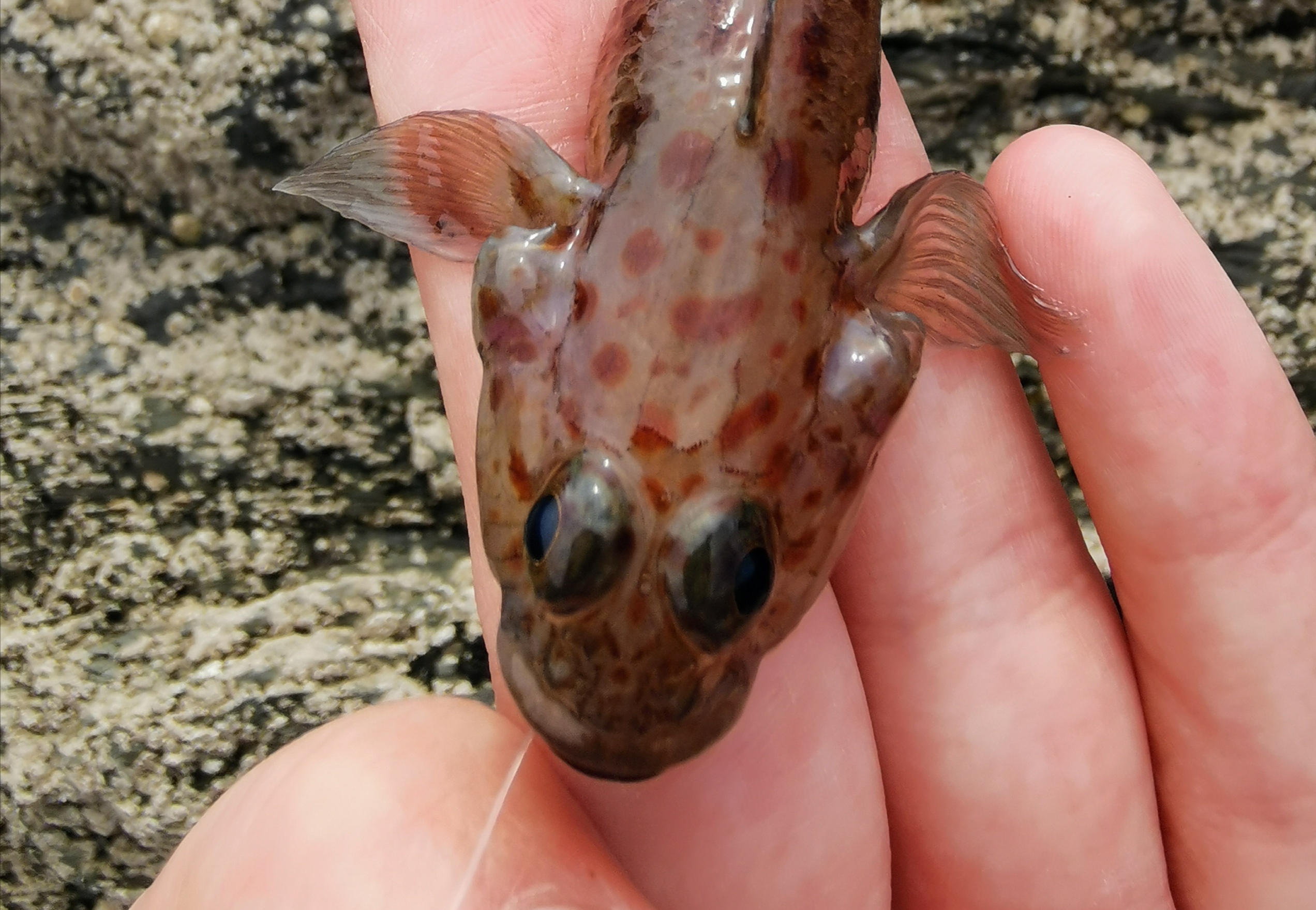
Tactics: Leopards are similar in size to rock gobies so require similar sized hooks and lures, they rarely come into shallow water though. I have though had the pictured fish from deep rockpools. My tactic is to visit those rockpools on a spring low tide, armed with a splitshot rig and a tiny piece of gulp or isome. I then sneak up on the rockpool and work the worm around rocks and in crevices, waiting for the take. These fish don’t really like the light, you really need to go to them if you are fishing in the day. Once the sun sets they become a lot more active in shallower water and can be quite reliable in the harbours of Weymouth, Torbay and even Hartlepool.
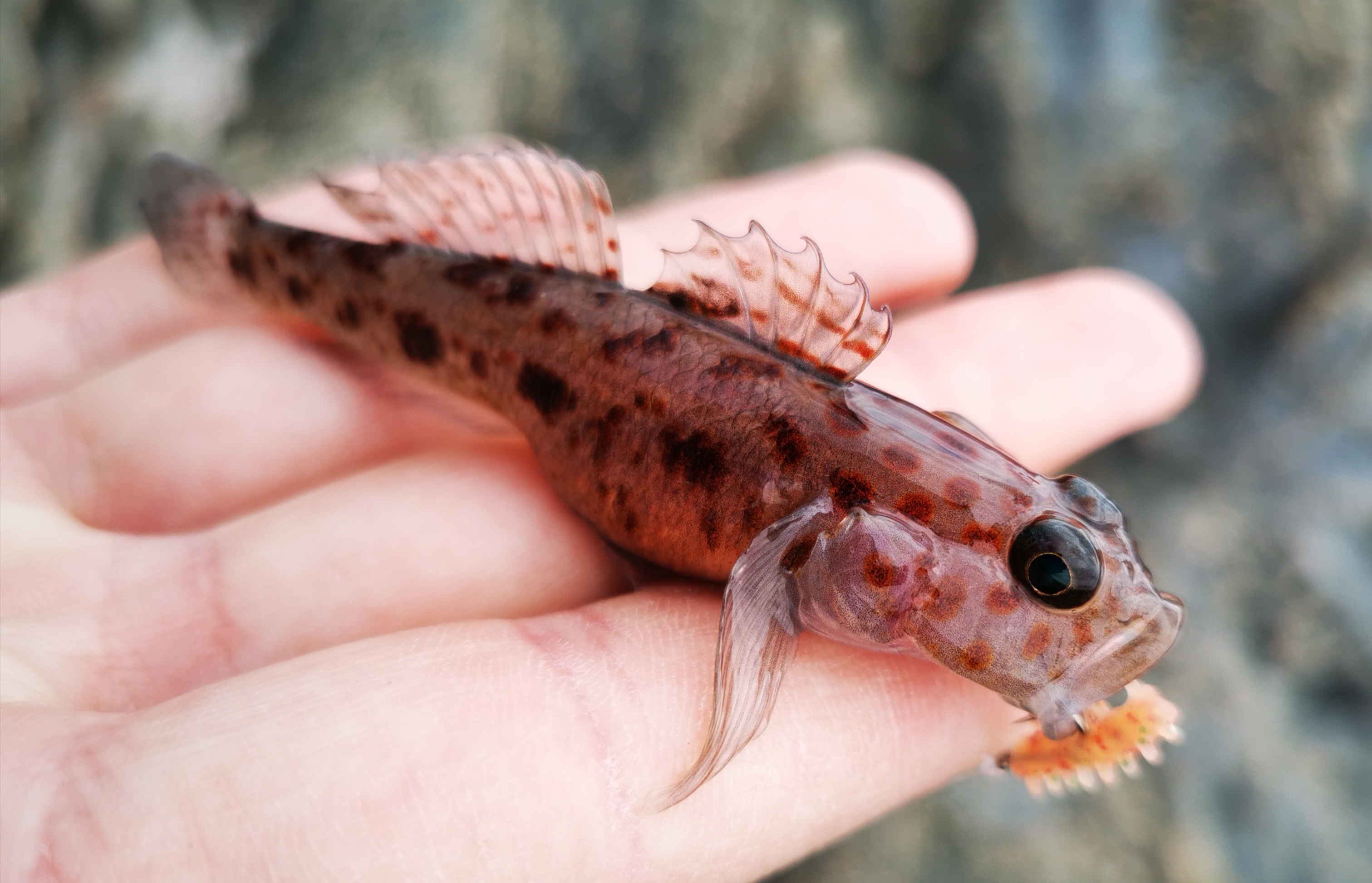
Identification: Well, this writes itself… Pink coloured with brown/red spots and large eyes on the top of the head. These are stunning gobies, quite possibly the best looking of the lot and one of the most distinctive.
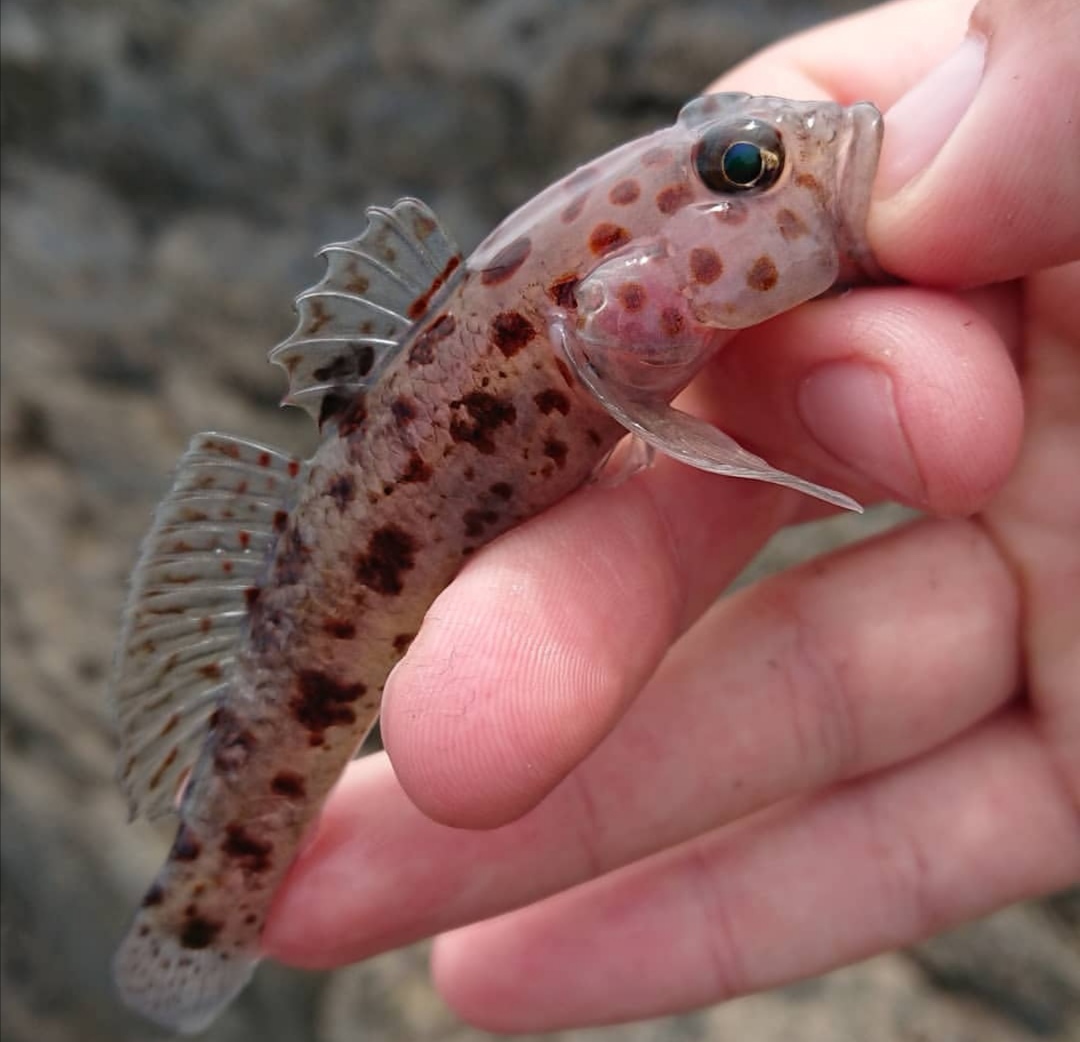
Two spotted goby
Here’s where we start getting small and weird. The two spotted is no usual goby. This is a tiny fish, no more than 5 or 6cm long. They spend their lives foraging among seaweed in small shoals, with most anglers just assuming they are fry of larger species. Unlike most other gobies they live off the bottom, they will escape to harbour walls and cover if startled though.
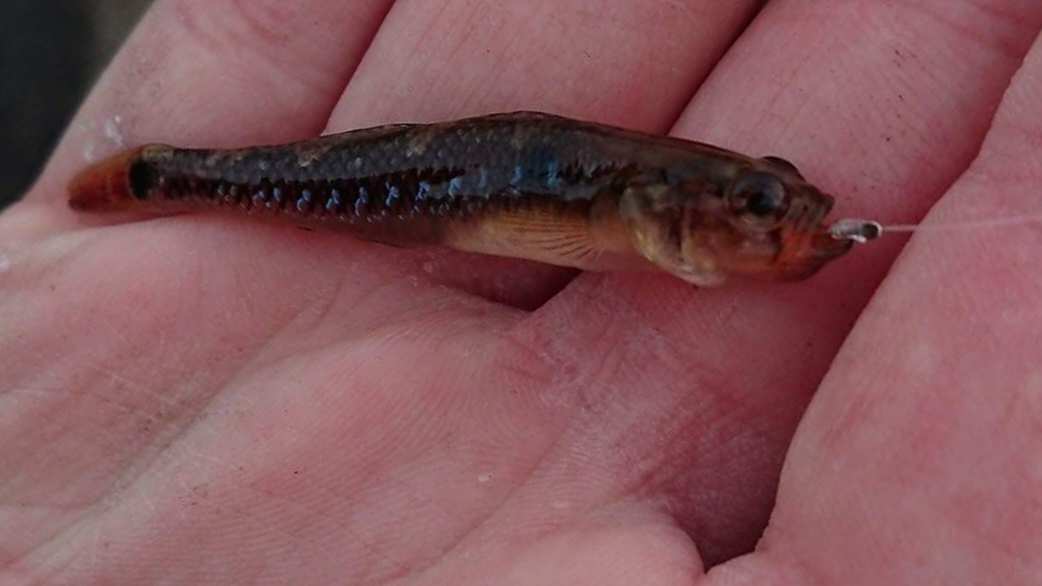
Location: These tiny fish are widespread, once you know what to look for you will see them surprisingly often. If they aren’t patrolling your local harbour walls, try rockpools and shallow gulleys at low tide.
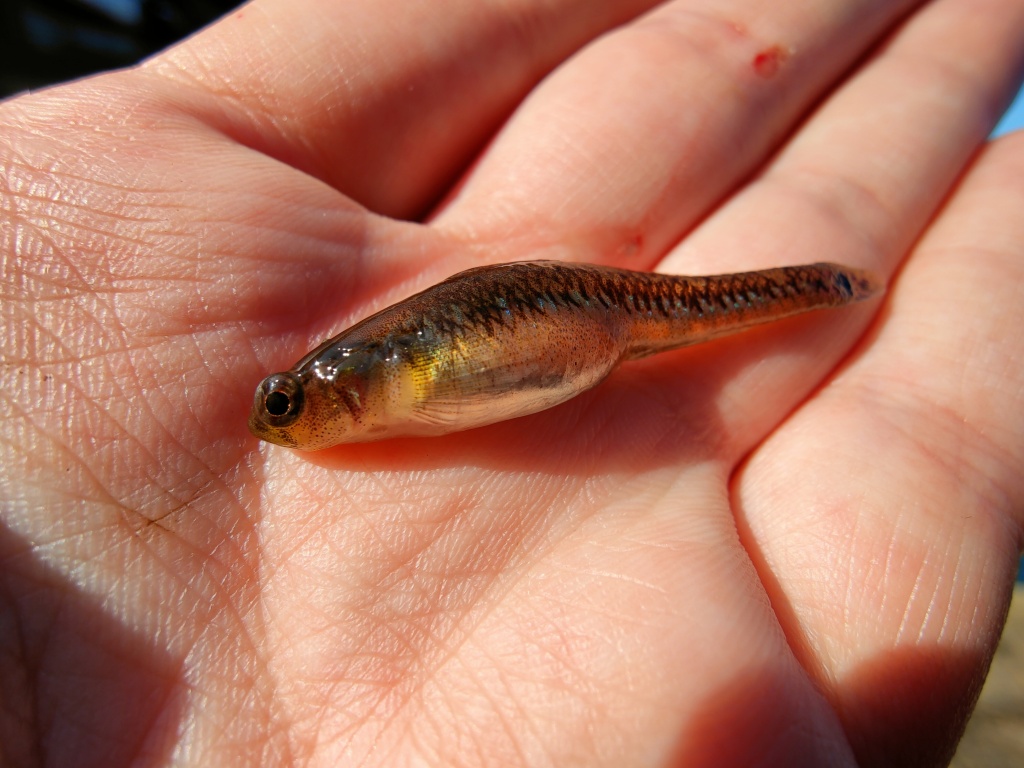

Tactics: I think the best way to target them is by sight fishing, they are so small you would barely feel a bite if fishing blind. Size 16 hooks or lower are essential with one or two split shot and the tiniest piece of scented worm you can pinch off. I walk the harbour wall looking for them, you can easily spot them if you look for tiny fry like fish with gold bellies. If you look closer you will see their beautiful blue flanks too. You need good eyes but get their attention and watch them take the hook then lightly strike and lift. It will certainly help you if you can find a shoal of them to get them competing.
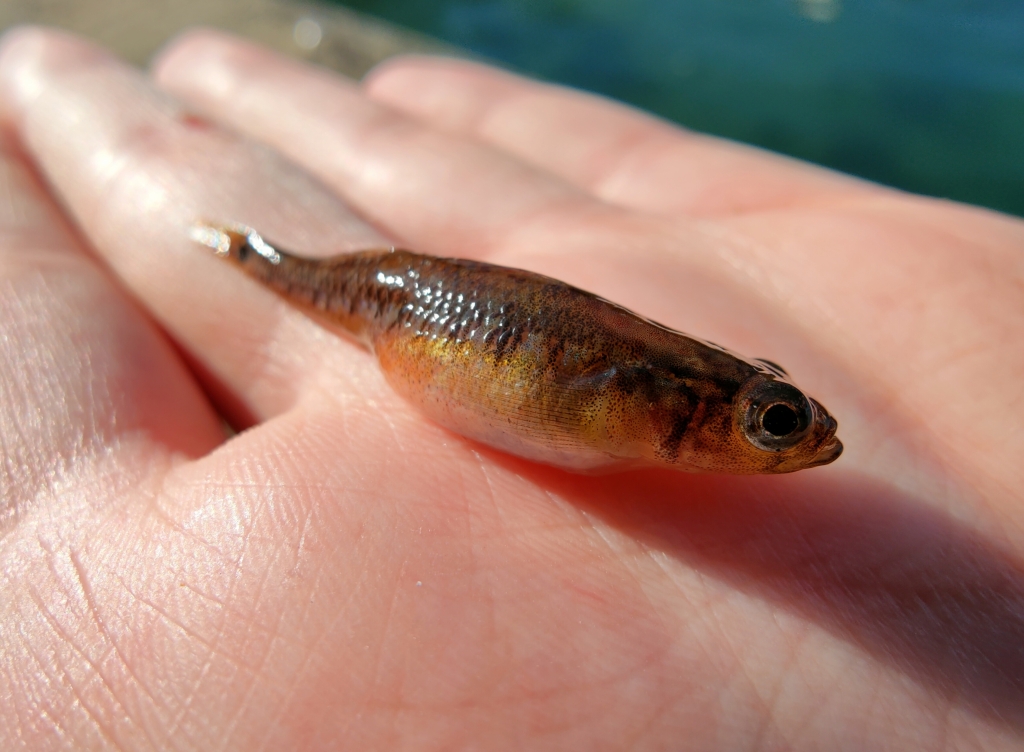
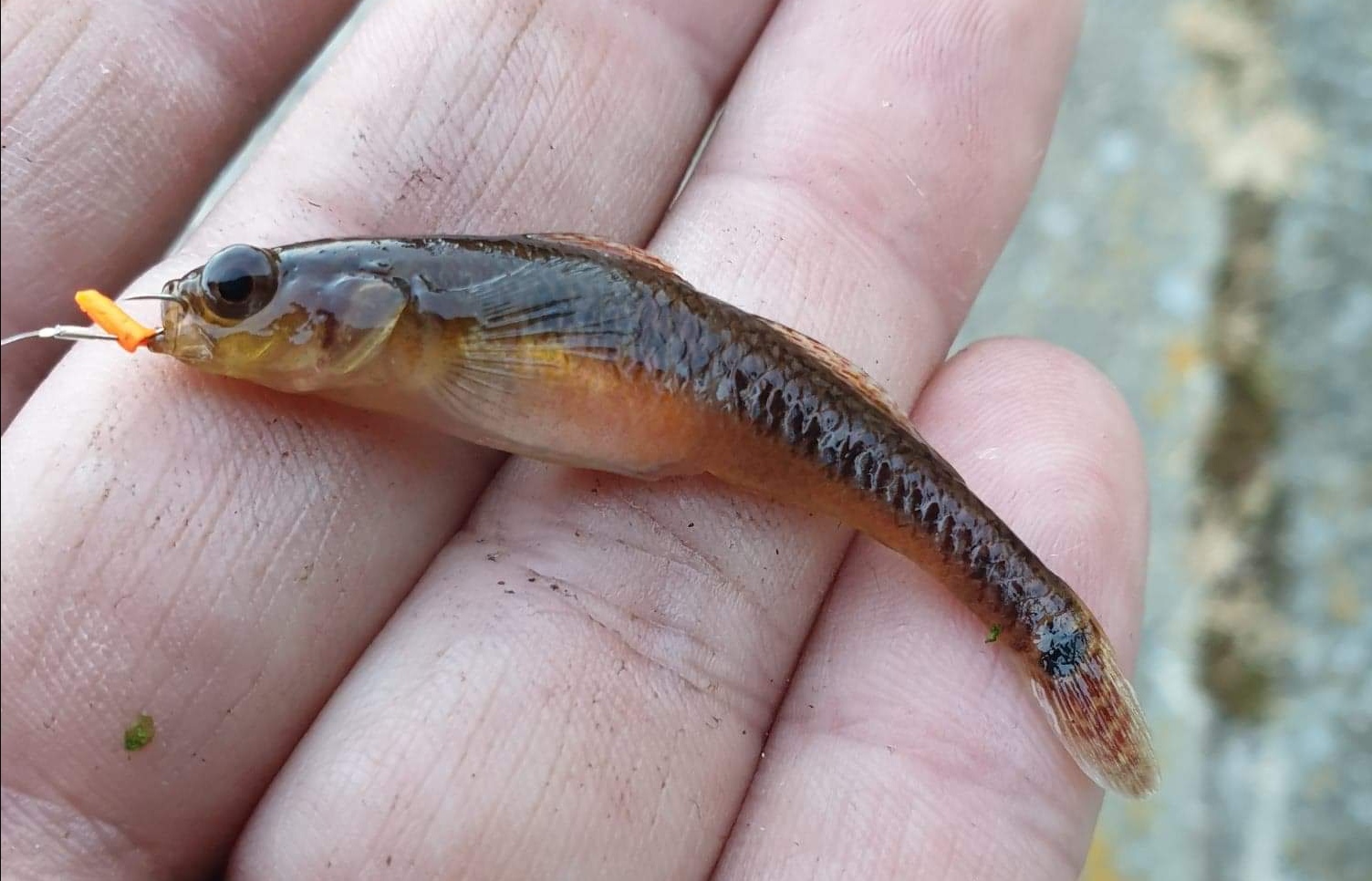
Identification: as stated above, in the water you are looking for tiny fish with gold undersides and blue flanks. Out of the water you can clearly see their two spots – one on the base of the tail, one by their pectoral fin. They have delicate blue striped scales along the lateral line. Their eyes are much more like a regular fish, being on the side of the head rather than on top. If you catch a male in spawning colours all of the above are much more pronounced, these are a tiny gem of a species.

Painted goby
This is a pretty little species that is much more common then in my early days of LRF I thought. In fact, looking back on my early catches I can see I misidentified some as sand gobies. An easy mistake to make but once you catch a couple,the little differences become easier to spot.
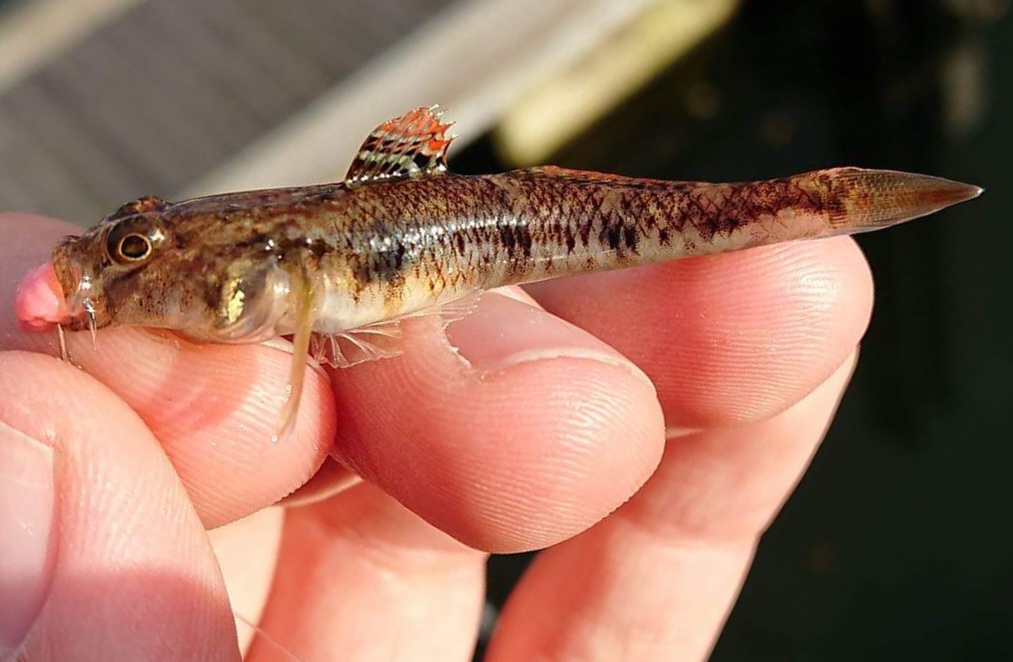
Location – A very widespread species, found from Land’s End to John O’Groats where suitable habitat exists. They seem to prefer sand or mud with a bit of cover. My best results have come from sight fishing in shallow water at night, where the painted gobies are easy to distinguish from their plainer sand goby cousins.
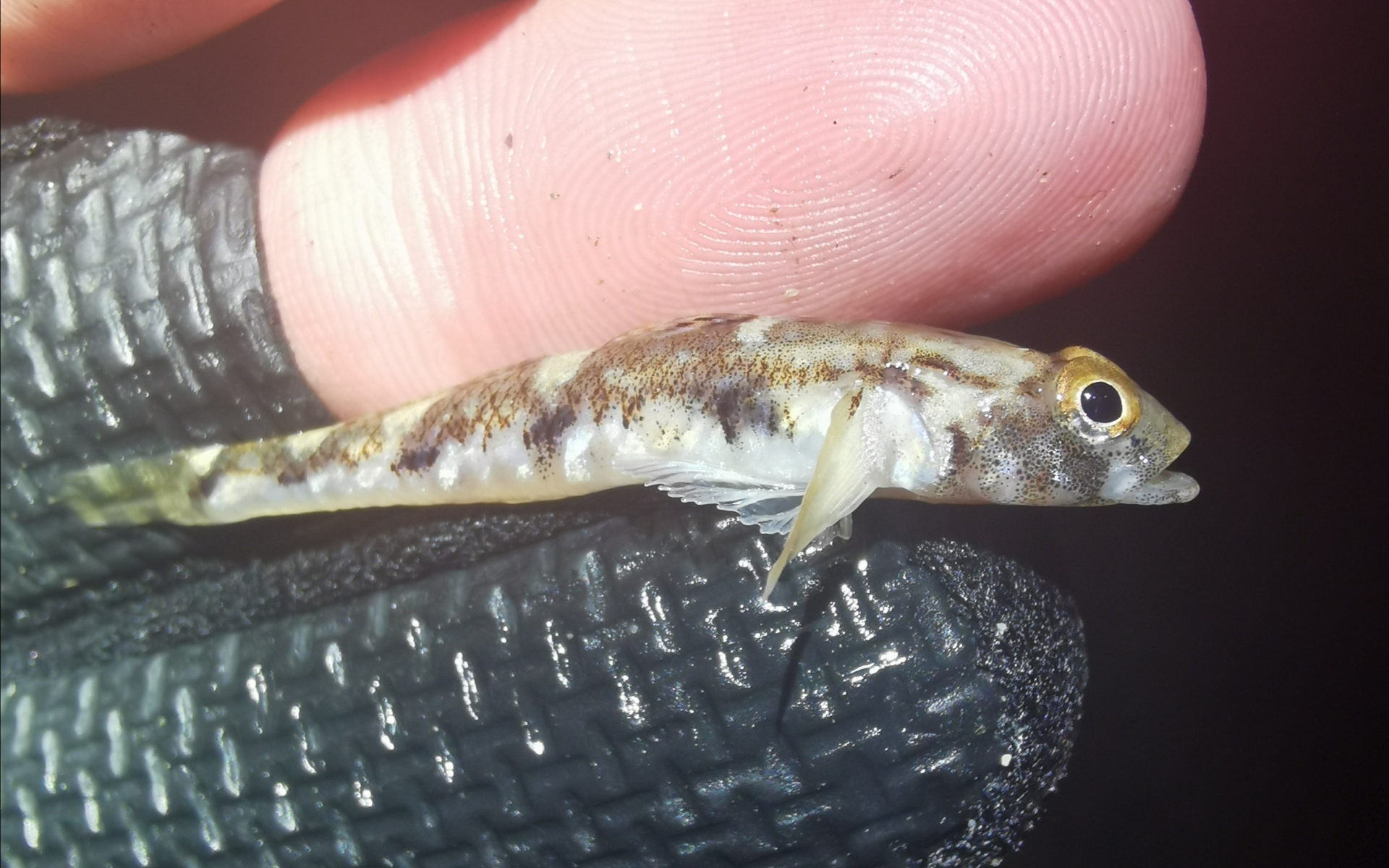
Tactics – I caught my first while targeting rock and sand gobies over mixed ground in the harbour. It took a tiny piece of Ecogear Shirasu on a size 16 hook. In more recent times I have used the Stinger Rig to great effect as the small gobies take the stinger hook rather greedily. Being tiny it’s best to use a size 20 or under or a Tanago hook.
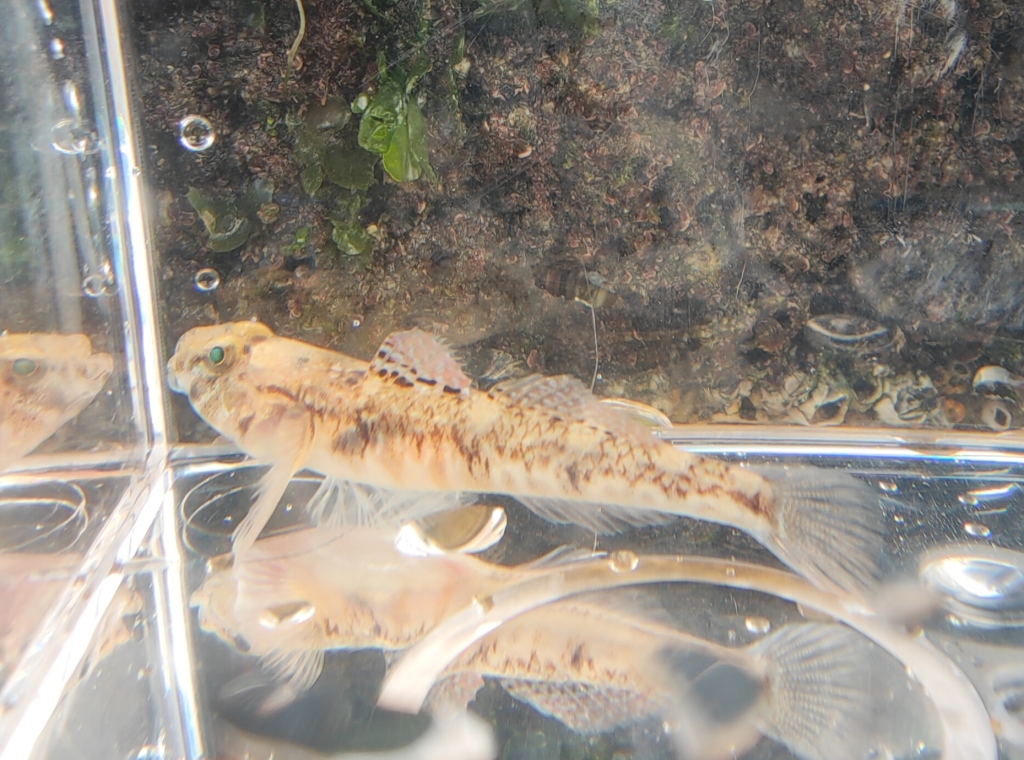
Identification – They are similar in markings and size to common and sand gobies; but the best way to ID them is to look for their distinctive dorsal fin, horizontal stripes of red, light blue and brown/black. They also have four light ‘saddle’ markings across their back. Under the headtorch you will also catch flashes of blue from their scales, they really live up to their name!
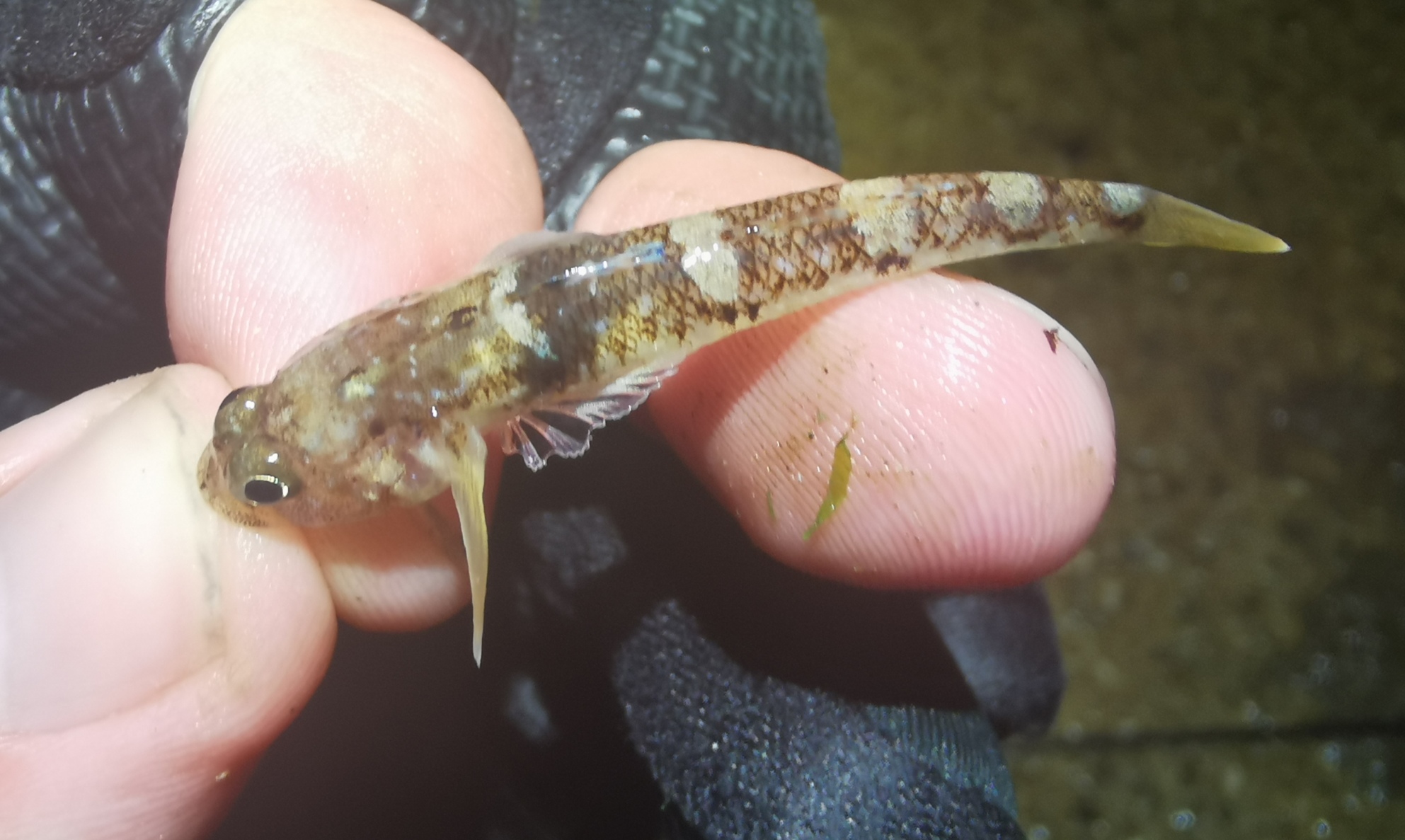
Sand goby
The sand is one of the most widespread and important prey species in UK waters. These aggressive, shoaling fish live short, dangerous lives trying to be predator while often being prey. Anyone who has cast a scented soft plastic out onto clean ground will recognise the rapid attacks you get from them. They are like tiny toothless piranhas.

Location – UK wide, although, like many gobies, they don’t appear quite as common on the East coast. Unlike common gobies, this species prefers more consistent saline environments, not often being found as far up estuaries as their cousins.
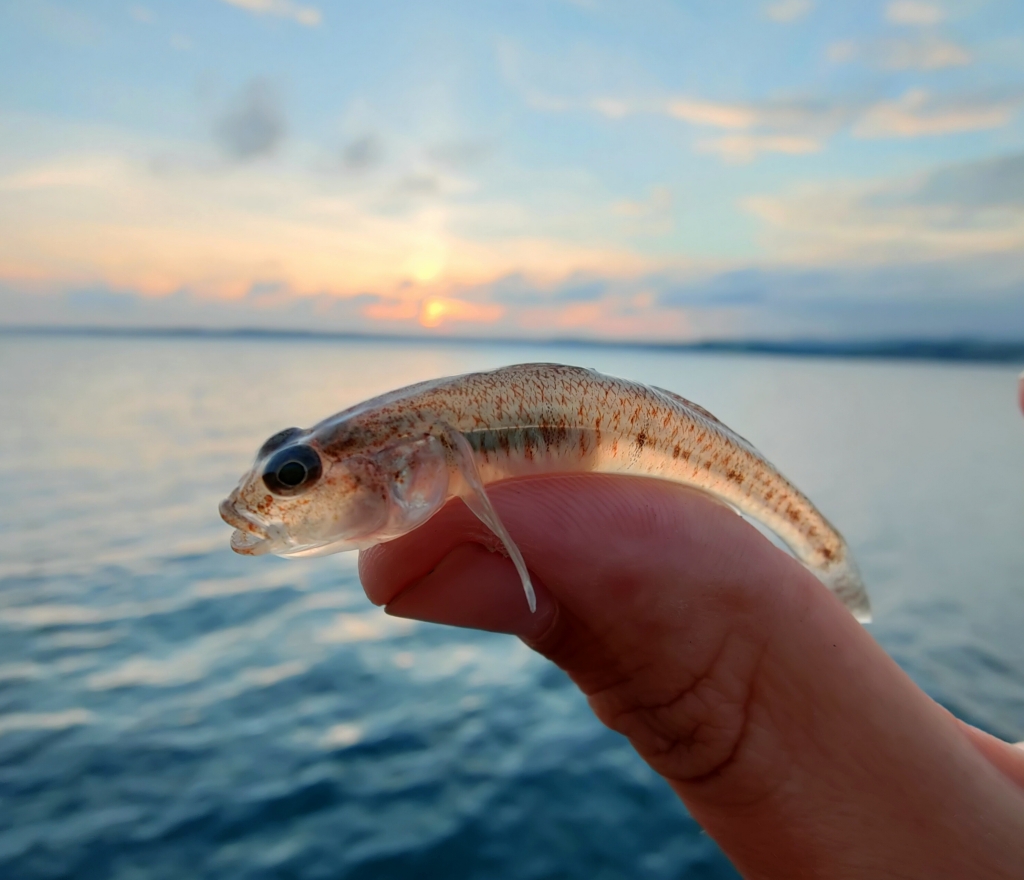
Tactics – Tiny hooks and tiny baits, although these fish will attack most lures without question. Adding a stinger to your lure is a sure-fire way to catch them.
Identification – These fish grow no larger than 8cm and are very thin bodied. They can be almost transparent underneath but normally are a mottled sandy colour, going darker if they live over mud instead. Their most distinctive feature is their black spot and white halo around it on their dorsal fin. This is the easiest way to tell them apart from common gobies.
Common goby
Quite possibly the hardest micro species to identify that I have come across. Common and sand gobies are painfully similar, with only very keen eyes/cameras helping you to tell the difference.
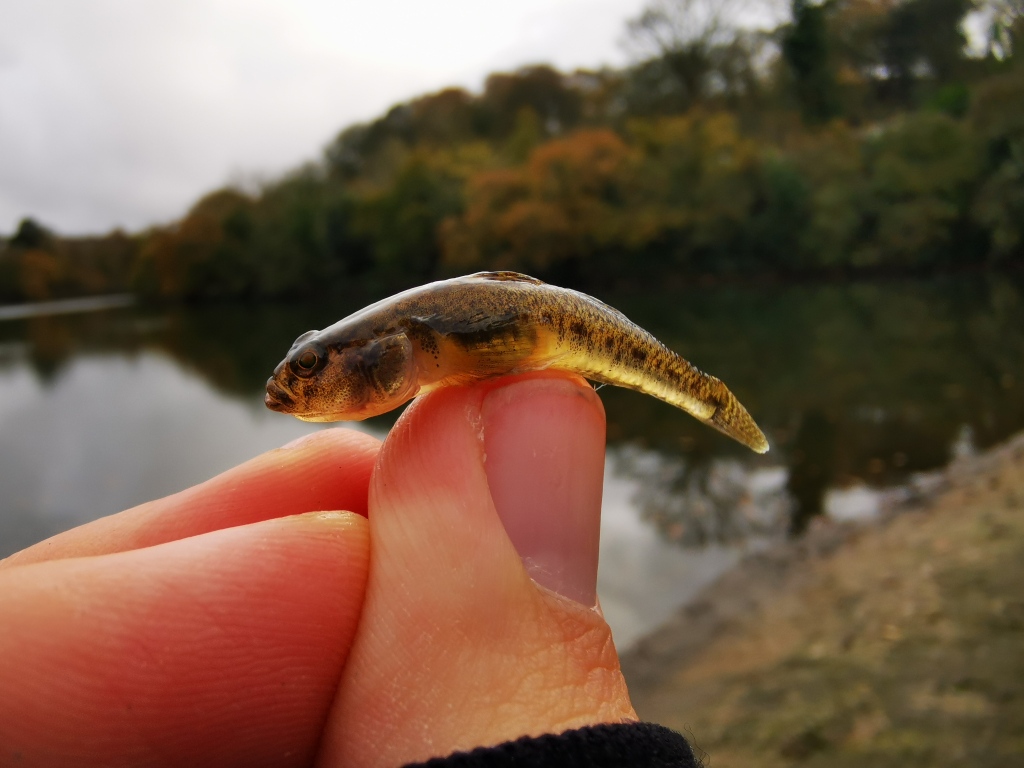
Location – Similar to the sand in being very widespread. As stated above this species prefers brackish environments, tidal pools and estuaries. This is the one of the easier defining characteristics.
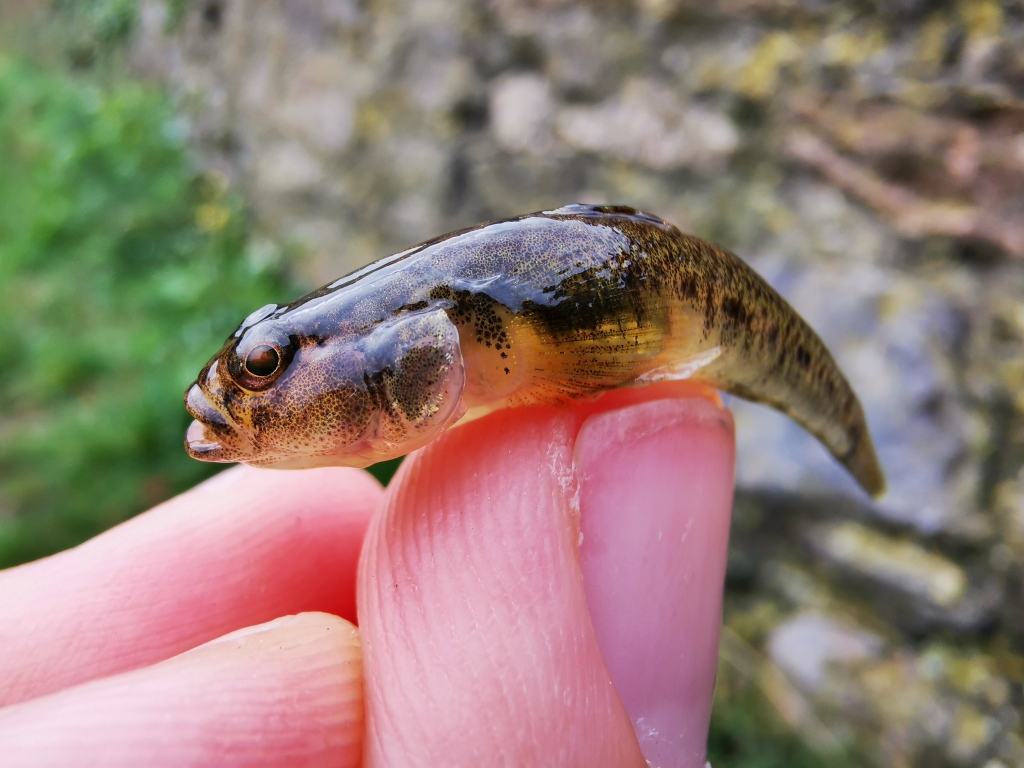
Tactics – Even tinier hooks and baits, sight fishing in the shallows has been the easiest way for me to catch them.
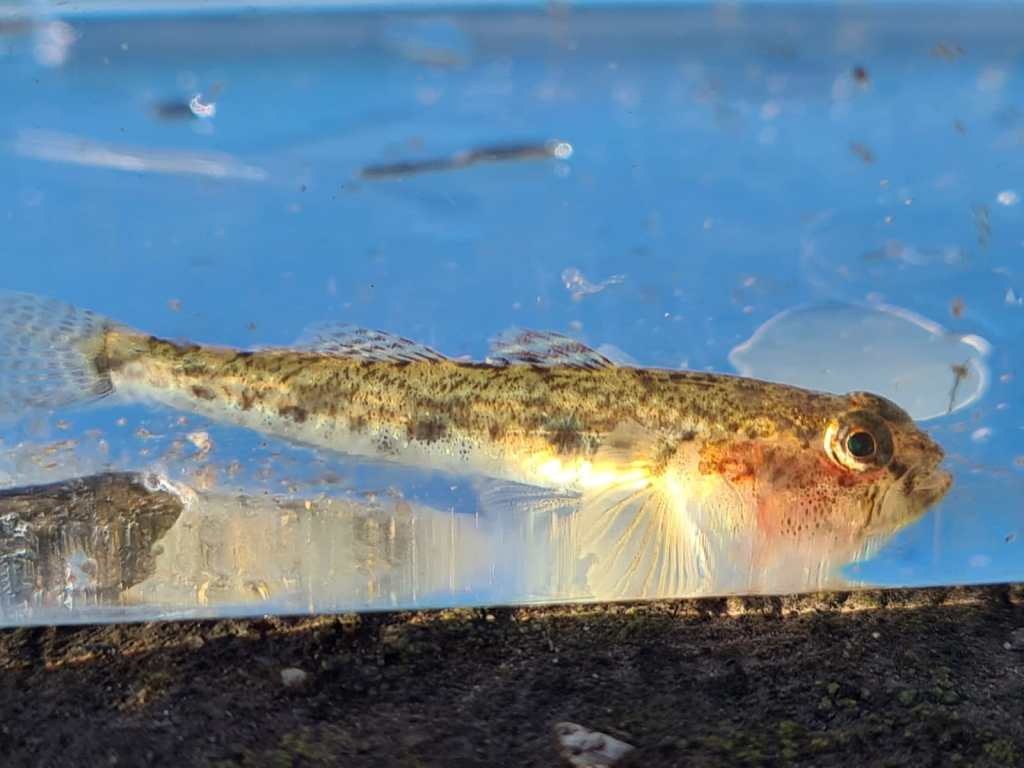
Identification – Common gobies lack the white halo on their dorsal, so if they have any white on the dorsal it’s a sand goby you have in your hand. Common goby males can go quite dark when spawning, with defined bars across their flanks. The best way to ID them is to put the fish into a small viewing tank, such as an empty Forrero Rocher tub filled with seawater, this way you can see the fish put their thins up without damaging them.
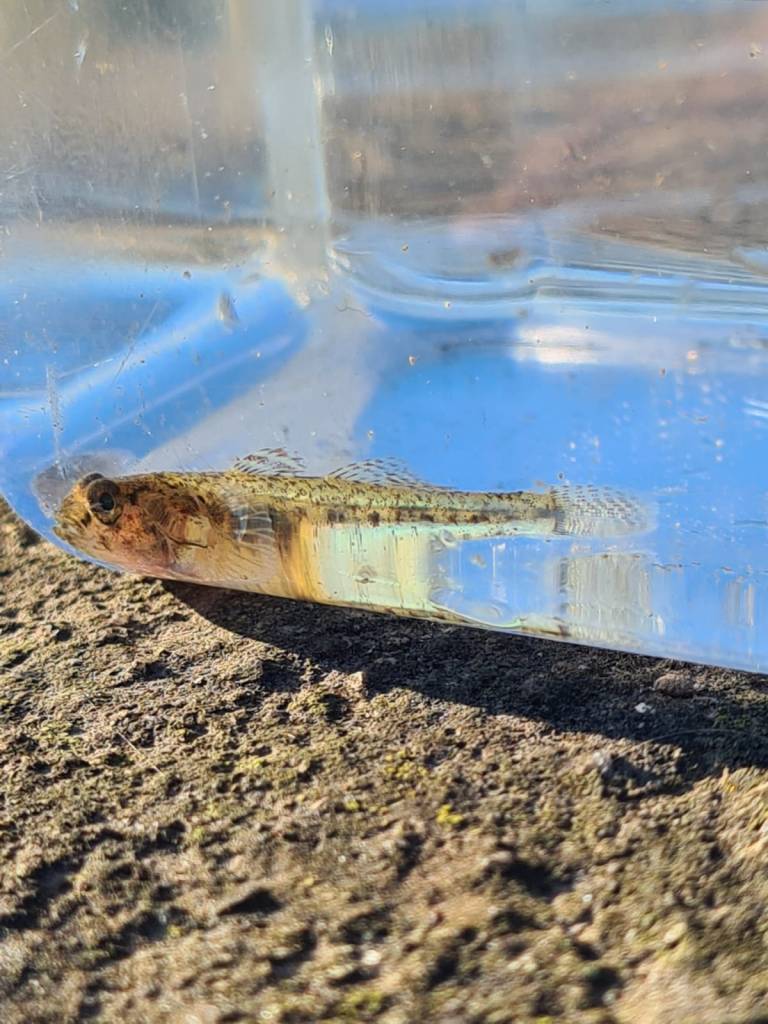
Stevens Goby (BONUS SPECIES)
Here’s a fish I haven’t caught at the time of writing. the stevens goby is a species that has quite likely been caught many times but misidentified. They resemble a pale black goby but the dorsal is covered in small light coloured spots.

A still unusual catch from the shore, Lerfers are getting better at ID’ing this species and more are being shared online. It appears deep water marks are essential but they take similar baits and lures to black and rock gobies.
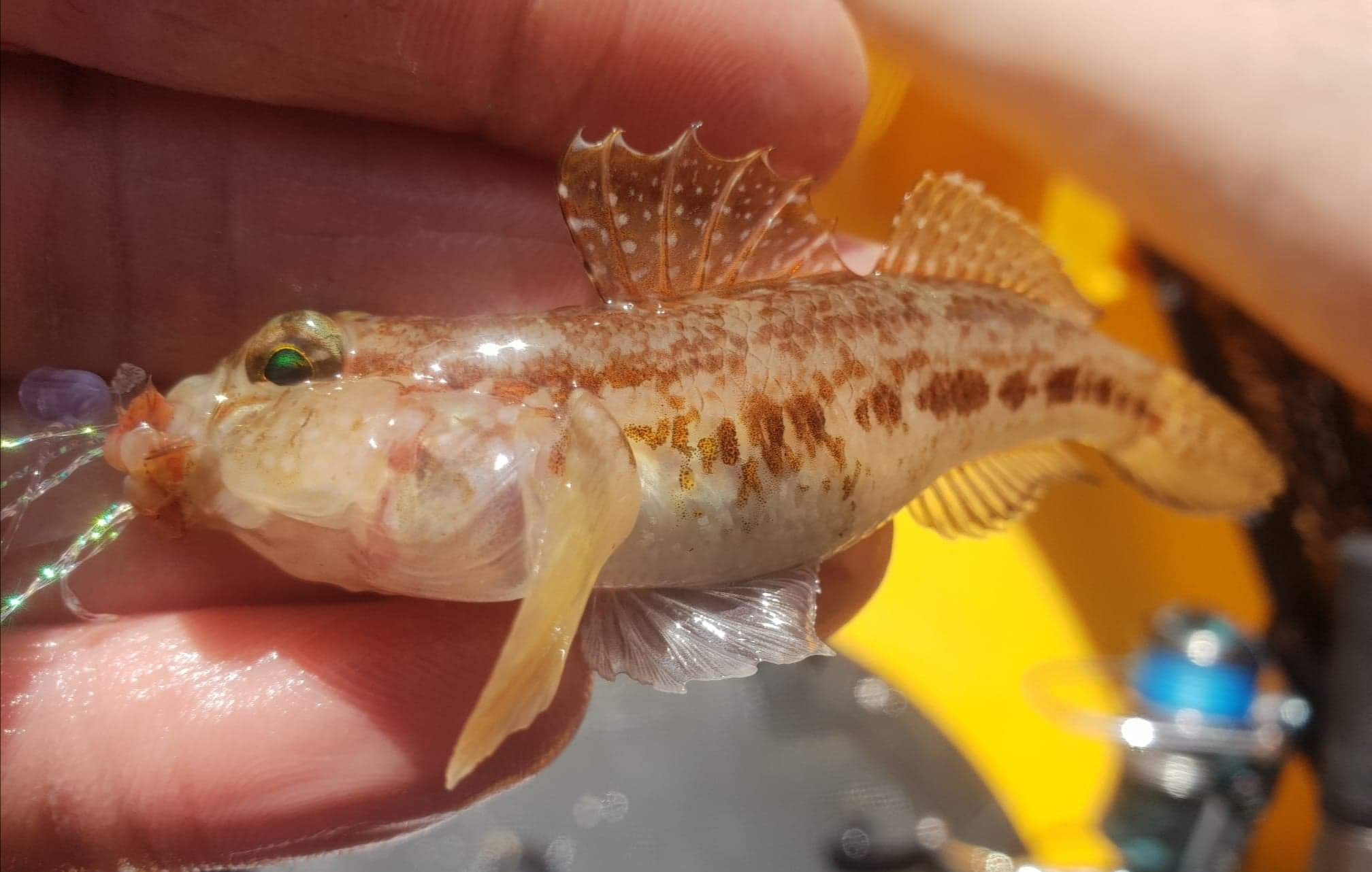
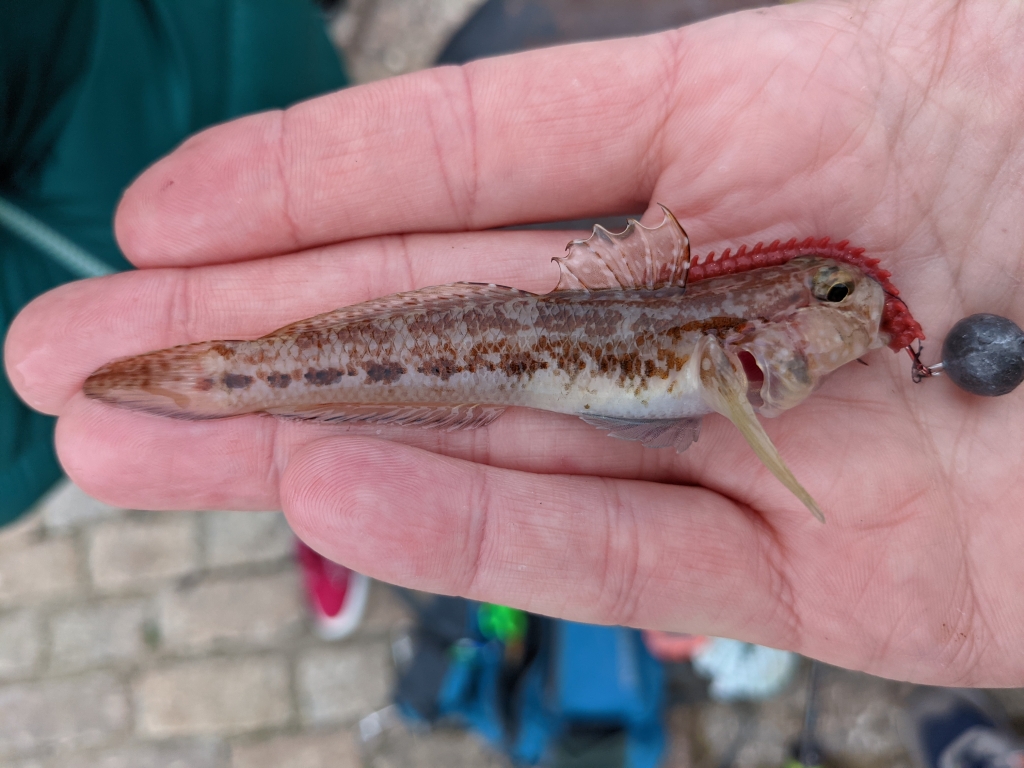
Couches goby
I have Irish species hunter Dan Finlay to thank for the next two species. The couches is another goby that is protected by UK law. It is a rare fish around our coast, with only two known populations in Cornwall and Dorset. It’s likely another goby that is more common than we realise but must be treated with the utmost care when caught and returned as soon as possible. Here are some lovely photos that Dan has provided for reference.

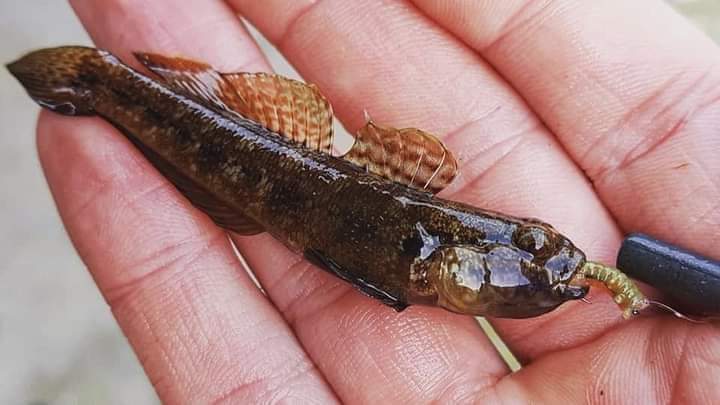
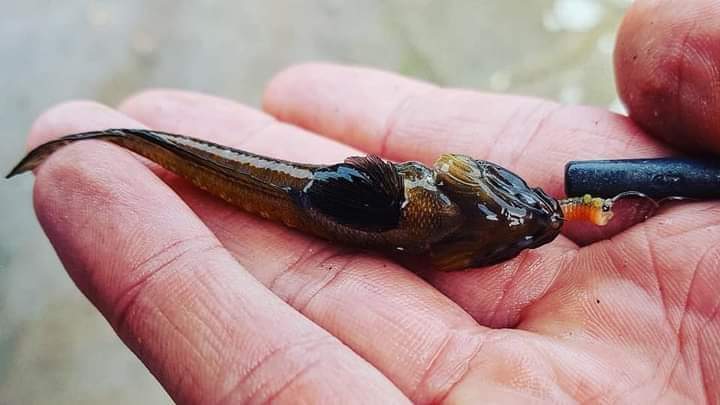
Red mouthed goby
My last goby is one that is not known to be found anywhere around the English coast but I think is quite likely to in the future. At the moment you would have to travel to the southern coast of Ireland to find one. As above, here are some photos for reference.
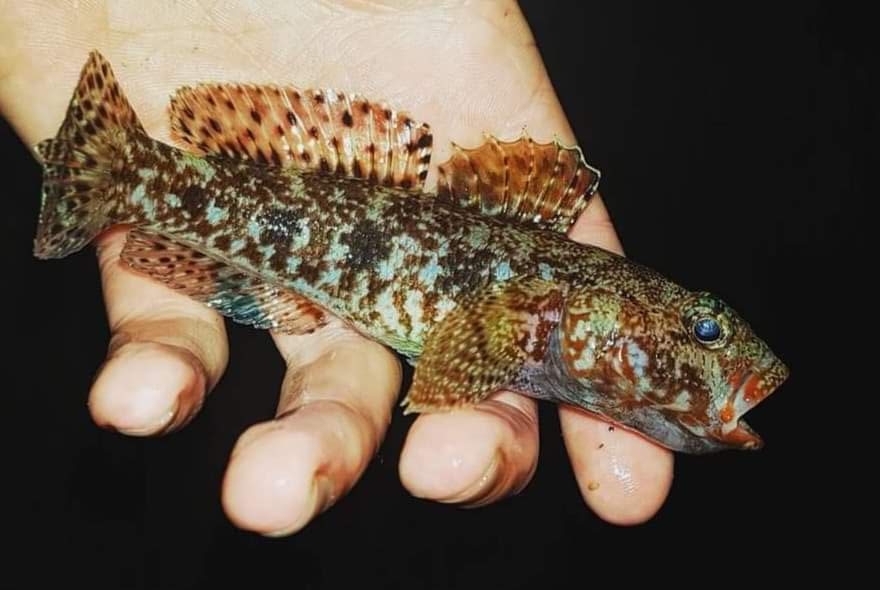
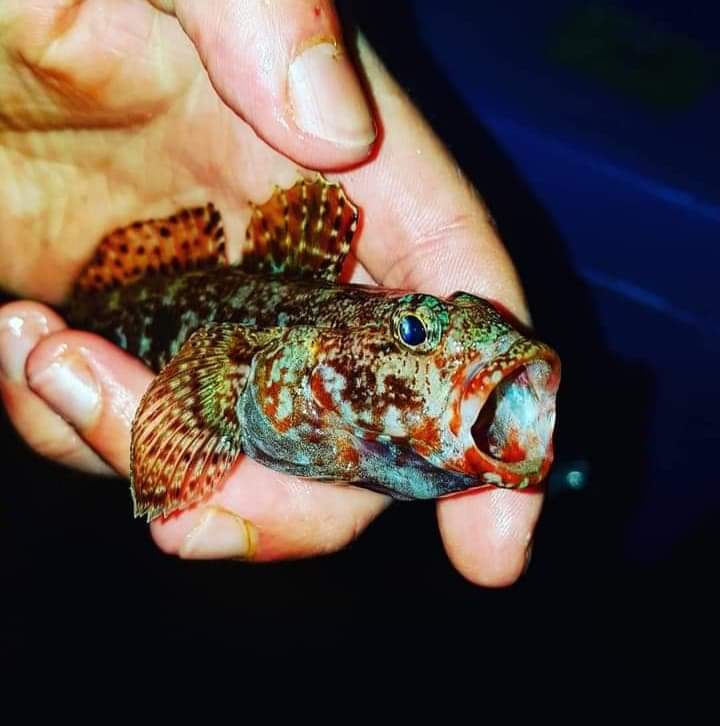
As always thank you for reading, this one is very niche and not going to be for everyone. I do think we can all benefit from appreciating the smaller fish at the lower end of the food chain though.
My page on Facebook
My page on Instagram
The newly formed LRF/Light Game Fishing Group on Facebook.
Richard Salter aka Devon Lerfer – on YouTube and on Facebook.
Neil Sutherland at Aquazid Studio – LRF based T shirt designs and more.
Simon Kingdom at Osborne & Cragg – Plymouth based tackle shop with a great selection of lures and everything else.
Dominic Garnett – Top angling author and a real fan of LRF.
Great pics and a great insight into the world of Gobies.
LikeLike